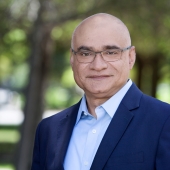INNOVATION FRONTIERS: THE NEUROSCIENCE OF DECISION MAKING
To better understand your customers and their purchasing decisions, you must first understand how humans fundamentally make decisions. A substantial proportion of these decisions is shaped by basic instinctual systems and processes that are not only automatic but also non-conscious. Throughout the course of the two sessions these basic neural systems will be unraveled, with an emphasis placed on the liking and the wanting systems. In the process we will highlight the critical role that emotion plays in the customer decision-making process and ways by which one can shape emotion to foster greater loyalty toward and willingness to pay for an offering. We will also discuss the downside of focusing on price rather than the brand to create a superior customer value proposition and, based on our understanding of the instinctual brain systems, the effective incentive systems that can be set for your customers.
ORGANIZING FOR PRODUCT MARKET FIT
This course takes the perspective of the general manager and explores two key facets of strategic leadership: setting strategic direction and managing the strategy-making process in established firms. You will discuss the key challenges associated with creating and maintaining long-term vision and profitable growth in established firms, and then analyze the interplays between business, corporate, divisional, and personal levels of strategy making.
THE CHALLENGE OF CHANGE AND AN AMBIDEXTROUS ORGANIZATION
Over the course of two sessions explore how, as a leader of your organization, you can balance the tension between the short- and long-term. We will focus on the use of culture as a potential source of competitive advantage—or disadvantage. Our emphasis will be on providing you with a framework and set of tools for thinking about culture as a social control system, especially in the face of disruptive change. Building on a congruence framework, you will also explore how leaders can use organizational culture as a powerful social control system within business units.
DESIGN THINKING
Get a firsthand experience of the key tenets of design thinking and how you can incorporate them into your work. Using design thinking as a framework, you will tackle a hands-on innovation challenge that will allow you to explore the principles of human-centered design, including empathy, rapid prototyping, collaboration, iteration, and feedback. You’ll also engage in a conversation about disrupting the managerial status quo, amplifying your organization’s strengths and addressing some critical obstacles.






